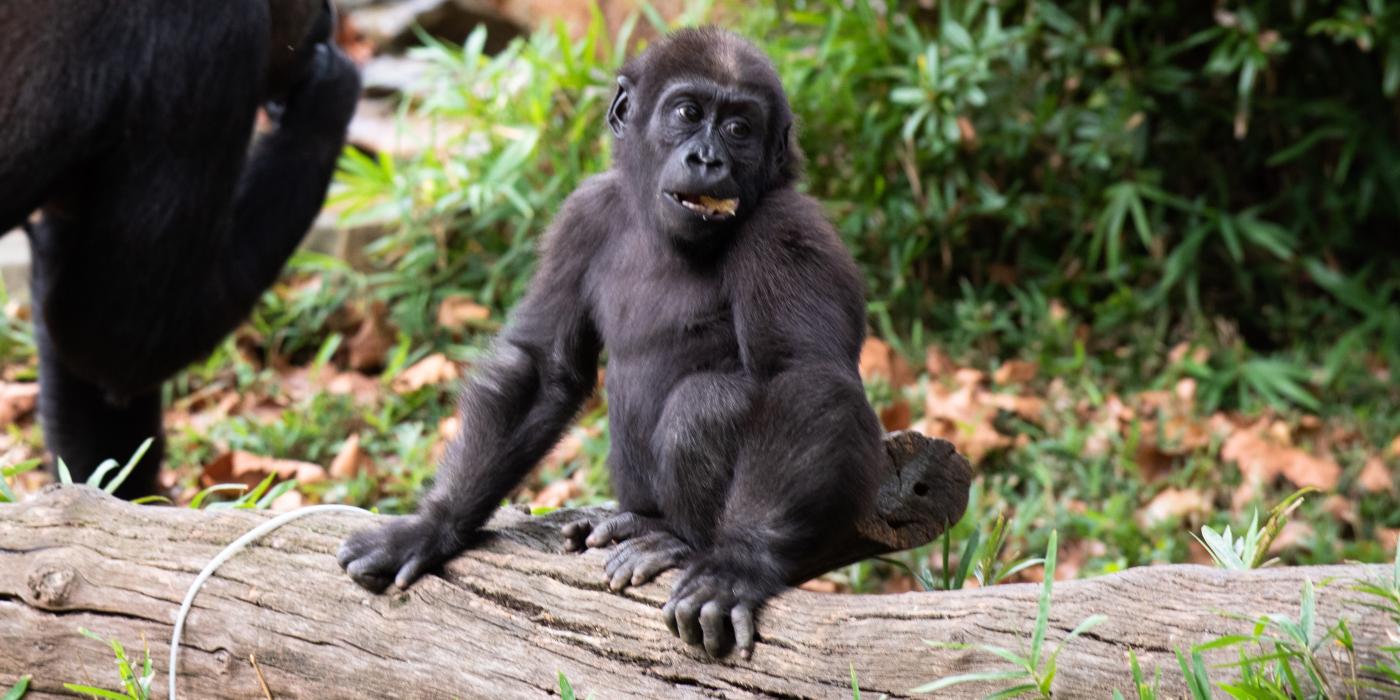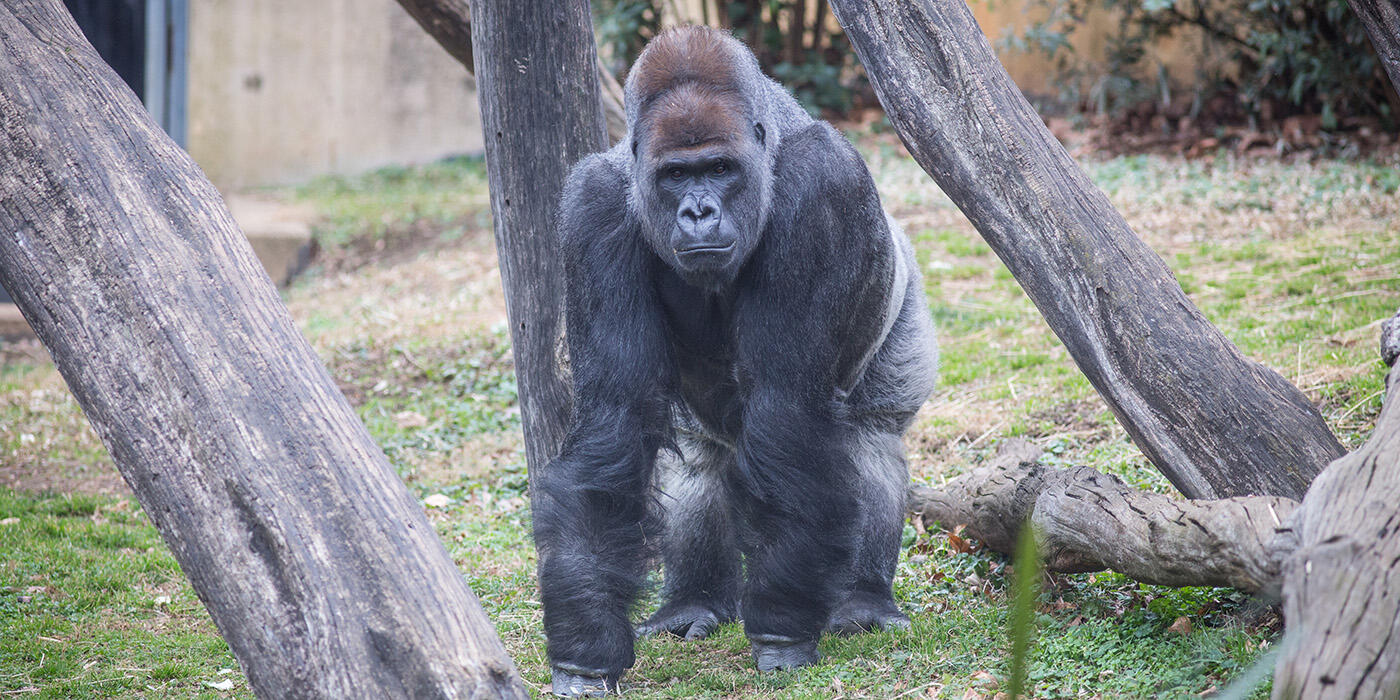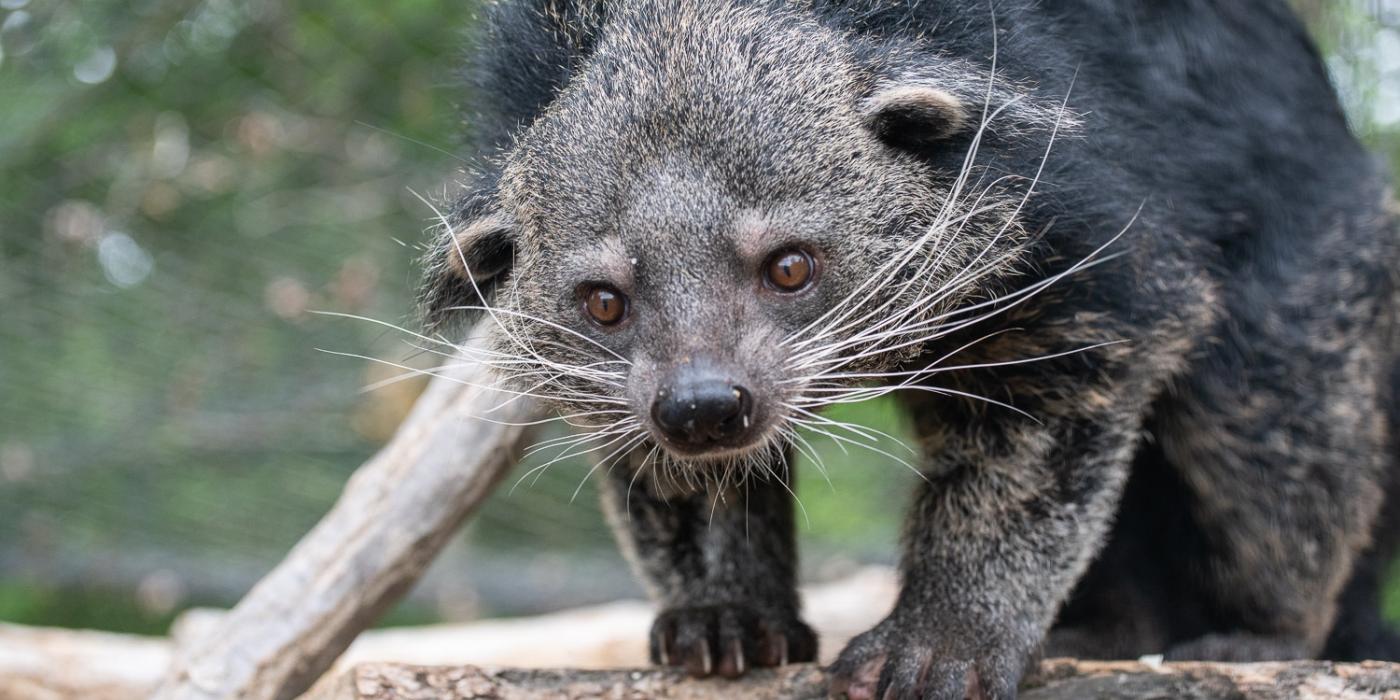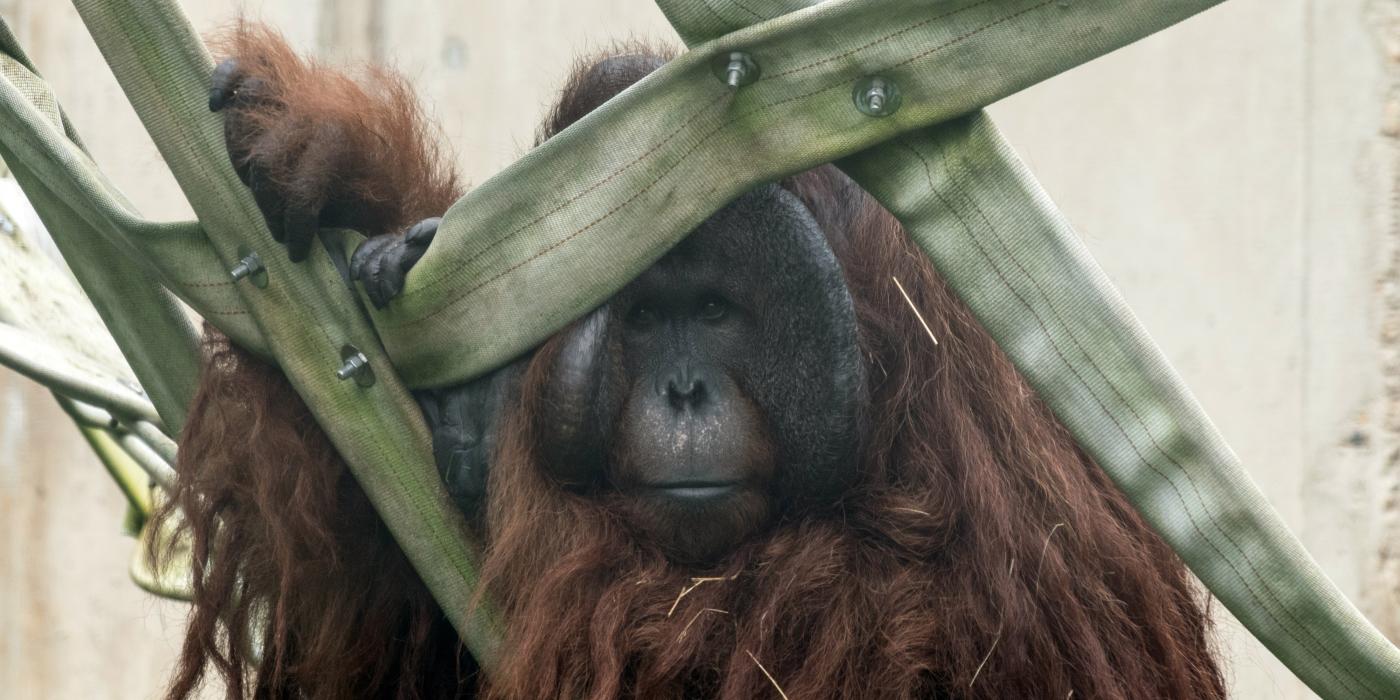#GorillaStory: Medical Training with Moke
Moke may just be a few months shy of turning 2-years-old, but our young western lowland gorilla has quite an independent personality! Since our last update in September 2019, we have watched him come into his own.
When it comes time for the troop to shift between habitats, Moke will often run ahead of his mom, Calaya, if she moves too slow for his liking, as though he is showing her what to do. It is clear that he thinks he is a big, strong silverback like his dad, Baraka, and will strut around the place like he owns it! When Moke wants to appear especially intimidating, he will go into “stiff stance”—stand high on his knuckles and elevate his shoulders. He’s starting to get the hang of the display behavior, now, too. He will bend his arm and sharply turn his head to the side before taking off, running at full tilt across the habitat and beating his chest. Gorillas don’t slap their chest, but cup their hands, amplifying that distinctive “popping” sound you hear!
In this video: Primate keeper Emily Bricker asks Moke to present his arm for injection training.
Every year when autumn rolls around, our gorillas and orangutans receive their yearly flu shots. Since they can catch the same strands of flu that affect humans, we administer vaccines as part of their preventative care. Our positive reinforcement training program includes asking the primates to voluntarily sit still for injections. They are always free to walk away, but if they choose to participate, they receive their favorite food as a reward.
When we train the gorillas, we often do so with multiple keepers so that each individual receives equal attention and rewards. This helps limit competition within the troop while respecting each individual’s rank within their social hierarchy.
In this video: Once Moke presents his arm, primate keeper Emily Bricker touches Moke with a blunted syringe. He is rewarded with banana for voluntarily participating in training.
As the silverback, Baraka has the role of directing his troop, but he is also the first to assert himself for a training session, especially if one of his favorite foods is being offered as a reward. Calaya—the dominant female in the troop—will displace our other females, Mandara and Kibibi, whenever she sees them training with keepers. Often, we separate them into two groups so that they can focus on the behaviors being asked of them without interruption. Last but not least, Moke wants all of the attention and all of the food, all of the time!
When Moke was younger and smaller, Calaya and Baraka would rip food right out of his mouth if it was something they wanted. Now, he has learned to run away from them when he gets a favorite diet item, and will even bark at them if they try to take it! Because he was not often able to hang onto high-value foods, such as fruits and nuts, he is extremely motivated to work for his own rewards. His eagerness to participate and lack of nerves around syringes meant that it did not take him long to master injection training.
In this video: Primate keeper Erin Stromberg places a heart rate monitor on Moke's finger to obtain his heart rate.
Moke received vaccines when he was a few months old without issue. However, as he got older, he was too aware of his surroundings to be a passive participant with his injections. We could not sneak them in without him noticing like we did when he was much younger. So, last autumn, the time had come for him to be actively trained to accept injections. Moke is a very fast learner and quickly picked up the cue that when we tapped our own shoulder, it meant that he should put his shoulder up against the mesh. At first, when he did this behavior, we rewarded him with fruit or nuts. We soon progressed to touching his shoulder with our finger. It was a short step from there to touching his arm with a capped syringe, followed by a blunted needle. To receive a reward, all he needed to do was hold still.
At this age, training sessions need to be frequent but very short, as his attention span for sitting and learning is very limited. We did these “touch” training sessions as part of our daily interactions with him to help him remember the behaviors we are asking of him.
In this video: Primate keeper Emily Bricker asks Moke to present different body parts for examination as part of his routine husbandry training.
When it came time to actually administer his vaccines, Moke held perfectly still with his shoulder against the mesh. In addition to the flu shot, he also received rabies, MMR (measles, mumps and rubella) and polio vaccines in October 2019. For every injection, Moke was rewarded with a huge piece of banana—a far better treat than anything he could get his hands on normally, given the stiff competition from his troop members. Syringes can be scary things no matter a primate’s age or species, but Moke has taken all of his shots like a champ. When it comes to this particular training, he is even tougher than some of the adult gorillas! Calaya is also learning to accept vaccines. We like to think she has learned some confidence from watching her son so bravely—and eagerly—tackle this training. If she was afraid or felt the need to protect her son, she undoubtedly would intervene. The fact that she trusts us with needles around her infant just goes to show how positive we are able to make the experience for both of them.
In this video: Primate keeper Emily Bricker asks Moke to present his ear so she can obtain his temperature.
Injection training is only the beginning, and Moke has many more behaviors to learn before he masters the full repertoire. We are training him to open his mouth so that we can check the development of his teeth. He is also learning to let us put a probe on his finger that allows us to measure his oxygen levels and heart rate. (We do this with the adult gorillas and orangutans, too, to monitor their heart rates without the need for anesthesia.) Asking Moke to present his head, hands, feet and other body parts so that we can examine them for any cuts, scrapes or bumps is coming along. One of the tasks that our 3-year-old Bornean orangutan, Redd, mastered in the past year was presenting his ear so we can take his temperature. Obtaining Redd’s temperature has allowed us to establish a normal baseline for him. That way, if his behavior indicates that he is feeling under-the-weather, we can determine if he has a fever and treat him accordingly. Moke is also learning this behavior, though he doesn’t really like to hold still!
Gorilla training sessions take place throughout the day as the opportunity arises, so if you stop by the Great Ape House during your next visit to the Zoo, you just might be lucky enough to catch one. We hope to see you there!
This story appears in the February 2020 issue of National Zoo News. Can’t get enough of Moke and our gorilla troop? Stop by and see them at the Great Ape House and Think Tank! Get the latest updates on our littlest great apes at the primate keeper talks, which take place at 1 p.m. and 2 p.m. daily.Related Species:




